How to fix on samurai sashimono? (Part two)
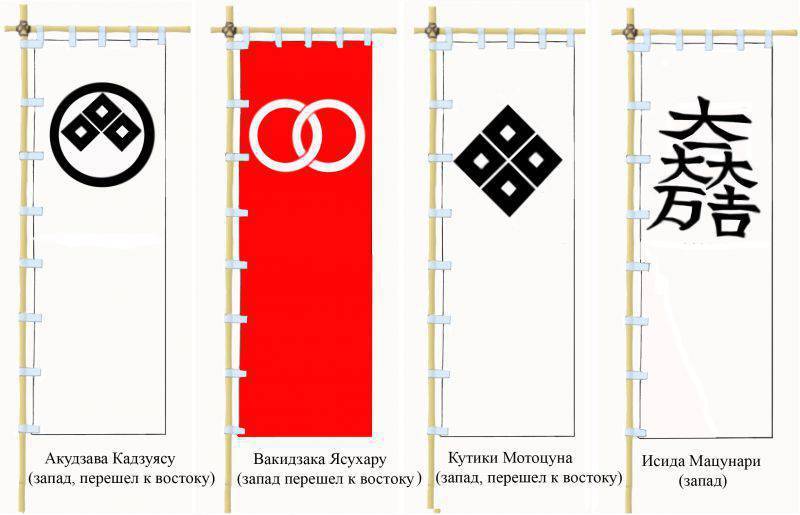
Nobori participants in the famous Battle of Sekigarakh - "traitors" and the commander of the army "Western".
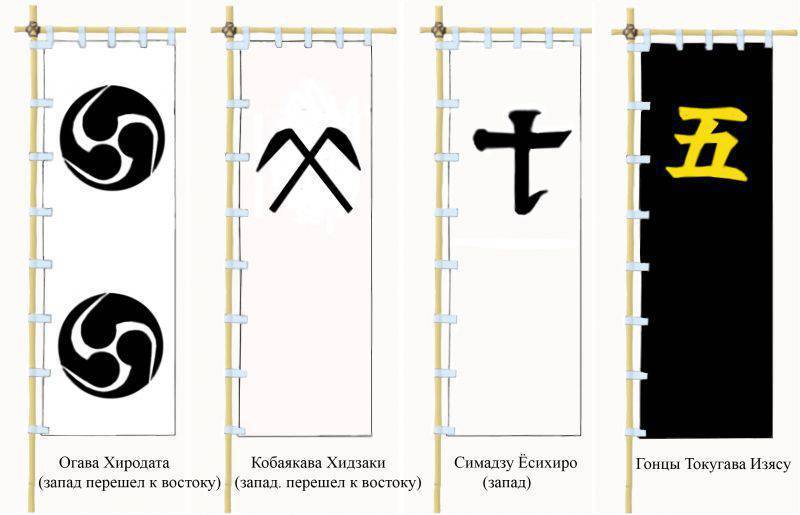
Nobori of the participants of the famous battle of Sekigaraha - "traitors" and messengers of Ieyasu Tokugawa.
Ashigaru Sashimono was very simple. For example, the ashigaru of the clan Yi has a simple red cloth.
Very soon, however, the usual flags were worn behind the back of the samurai ... "somehow not interesting." They needed to stand out at all costs, including their appearance. Therefore, their sashimono acquired a completely extravagant appearance. First of all, they became volumetric. But since such a sign could not be by definition, then they began to make them from paper, feathers and fur. It could be two or three fur balls on a bamboo rod of a different color, a pole, with prayer plates of ema or a figure of ... a bear or a crane hanging on them. Sashimono is known in the form of “rice pestle”, “anchor”, “lamp”, “umbrella”, “fan”, “skull”. That is, the fantasy of their creators was truly limitless. Moreover, very often the samurai mon was one, but the sashimono portrayed something completely different.
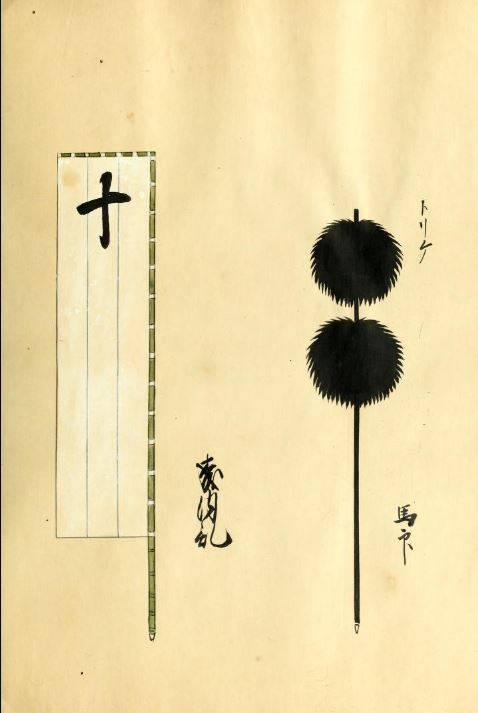
Standards clan Mori Nagatsugu (1610 - 1698)
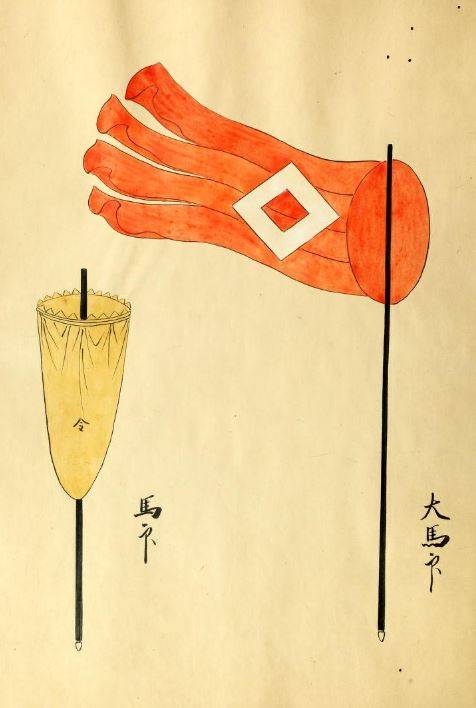
Standards clan Hori Nayori

Modern reconstruction of Nobori Ishida Mitsunari
Daimyos, if they had to go into battle, often immediately removed the jinbaori and attached sashimono to the armor, since it was impossible to wear both at the same time. So, for example, the daimyo Hirado had a sasomono in the form of a golden disc on a black field.

Sasimono Takeda Singen. Reconstruction.
But with the emergence of such a huge number of flags, the problem of identifying the daimyo himself, his staff and his entourage, has become acute again. And by the beginning of the 17th century, it was possible to solve it with the beginning of the use of the so-called “big standard” and “small standard” - respectively - o-mind-jirushi and ko-mind jirushi. Very often these were flags similar to nobori, but only with a square-shaped panel. But more often, they also took the form of various objects - Buddhist bells, umbrellas, fans, solar disks.
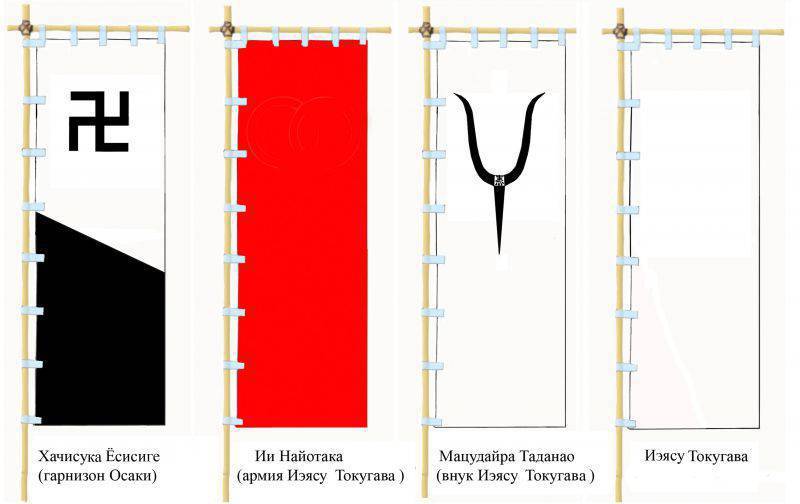
Nobori participants in the siege of Osaka Castle. Ieyasu Tokugawa had a simple white cloth.
Some standards were very large and heavy. Carrying such a standard was trusted to the strongest commoners, and it was a great honor for them. Sometimes they were strengthened behind their backs, like sashimono, but the standard-bearer himself supported the shaft for a couple of stretch marks, and two more people held him by the stretch marks from the sides.
This is how fukinuki were worn. Sometimes (an obvious relic of matriarchy) the banner of a samurai detachment was ... a woman, usually the mother of a samurai, who took a vow of revenge. Drawing from Armor Modeling magazine
But the hardest and most difficult thing to do was to carry the fukinuki, a long pennant similar to the emblem of a carp at the Boys' Festival. The wind inflated him like a huge stocking, and it was very beautiful, but it was really hard to keep him from falling.
The Japanese would not be Japanese if they did not come up with a lot of devices for wearing sashimono and nobori and tried to give them a finished and elegant look.
In this picture we see all the basic details with which the sashimono was attached to the samurai's armor on his back.
The sashimono shaft was inserted into a pencil case, which could be either square or round in cross section, and which was called uke-zutsu. It was customary to varnish it, so that although this accessory was purely utilitarian, it looked like a genuine work of art. Since there could be two, or three, or even five flags behind the back, the number of pencil cases corresponded to their number.
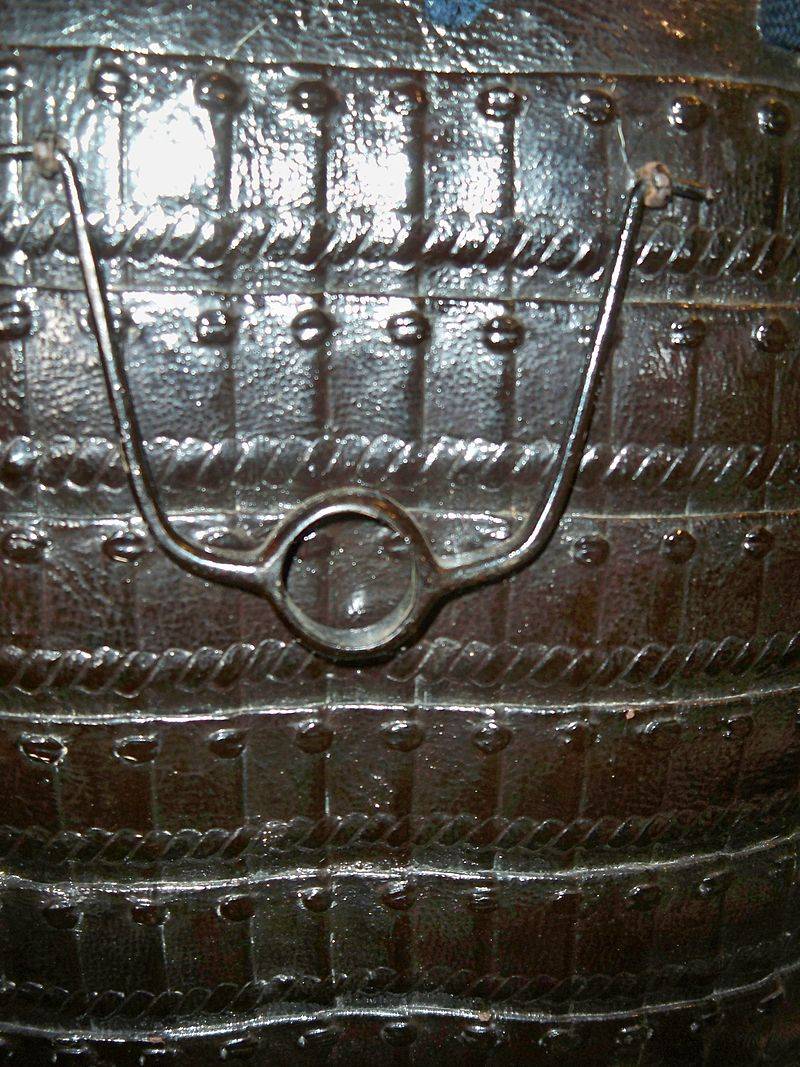
In the upper part of the shell, the uke-zutsu was held with a gattari bracket. It could consist of one or two parts, and gattari made of a wooden plate are also known, again with one or more holes according to the number of flags. This detail was attached to the back plates of the armor on hinges. This made it easy to disassemble the dorsal structure with the sashimono mount and remove the armor itself for storage in a box, and with it put all its accessories in it.
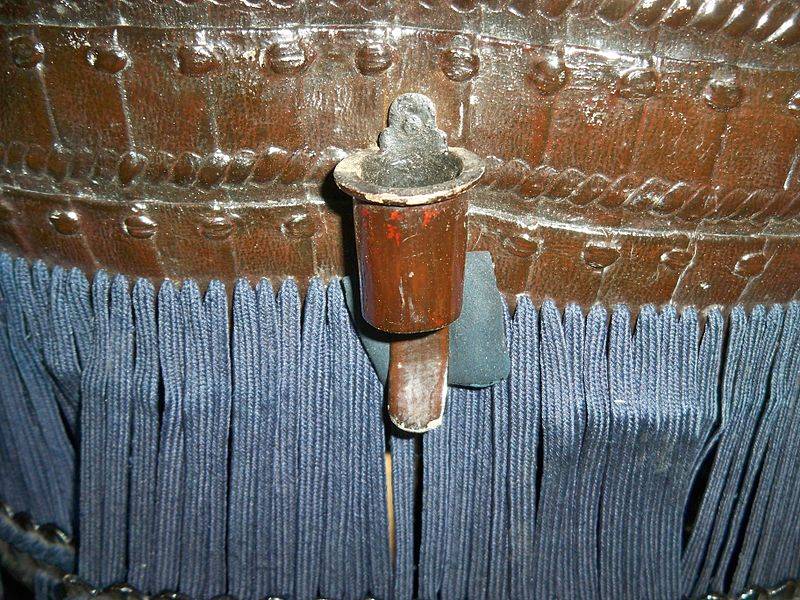
At the level of the belt, the “heel” of the pencil case was attached - machi-uke (uketsudo). Usually this part was metal and varnished in the color of the armor.
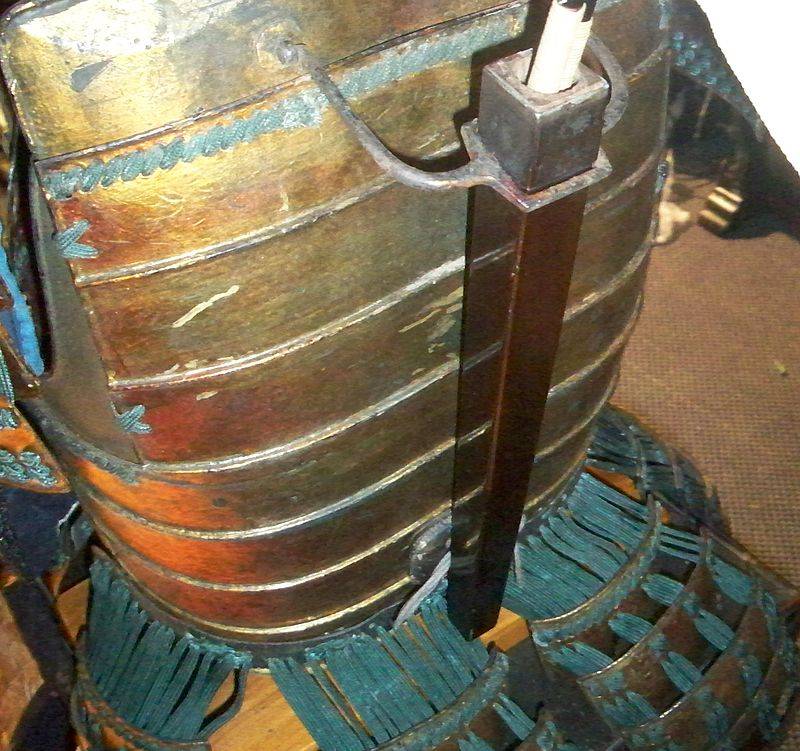
This photo shows a case for sashimono fully assembled. For ashigaru a standard fixture made of wood in the shape of a triangle with rounded corners was provided. Wore it on ties like a backpack. At the same time, it did not require armor, which made it possible to impress the enemy with the number of its troops even in the case when most of them did not have any armor at all. (Tokyo National Museum)
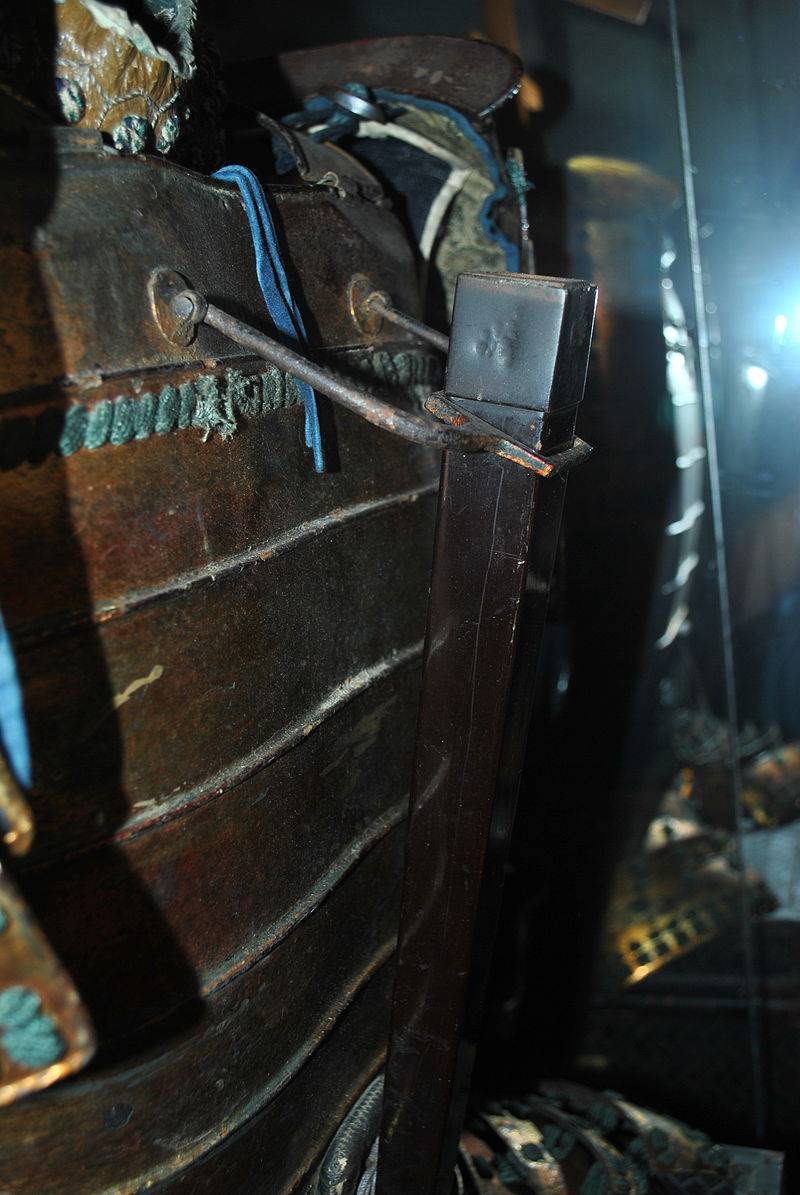
Bracket Gattari.
There were several identification marks used by the Japanese in a combat situation. These are the field screens of the Maca or Ibaku, with which the command post was fenced in from all sides. As a rule, they depicted a very large mon commander. Near the command post was located a detachment of messengers - tsukai-ban, with which the commander gave orders. And here was his most important standard, visible from afar. It seems strange, but as he commanded at all, sitting behind curtains, but in general, the review in the direction of the enemy was left to him. But the main thing was that all the Japanese commanders perfectly knew how to read the map, had shinobi in the army of scouts, and most importantly, they could count on the unquestioning obedience of their commanders. That is, where they were put, indicating the location on the map, there they had to stand, and move back and forth only to an order, transferred by the messengers. Within the framework of all this, one could show his personal courage as much as he wanted, chop off as many heads as he wanted and collect them around the battlefield. But the order was to be executed immediately.
Horo from Armor Modeling magazine. Sometimes they were well represented by structures that were simply amazing in complexity!
By the way, the messengers were identified by another very entertaining fixture - a good big bag of colored fabric, like a huge bubble. He had a base of flexible rods, so that with a jump even under the pressure of the wind, he did not lose his form. Horos wore not only the messengers, but also the soldiers of the bodyguard detachment. It was fastened in the same way as sashimono. For this, it had a pin inserted into uke-zutsu. But as always, there were originals, which alone was not very good. A sashimono tube or a Kosi-Sashi officers badge was attached to it. The form of "basket" could well be the most diverse. For example - to resemble a dome or ... European ladies' crinoline! Since the horror had a very large volume, which, by the way, is clearly seen in the figure from the Armor Modeling magazine shown here, the figure of the samurai with good on its shoulders acquired grotesque dimensions, which is considered to be a scarecrow of enemy horses!
Horizontally, they were usually sewn of bright-colored fabric, and besides, they also depicted mon daimyo, which allowed an instant identification of the messenger. But good could serve and for other purposes. So, in one of the Japanese manuscripts, it was stated that both horo and sashimono could serve to wrap the severed heads of their owners in them. "After removing the head from the warrior who wore horo, wrap her in a silk cape, and if it is the head of a simple warrior, wrap it in silk sashimono." These instructions tell us not only that silk was used as a fabric for sashimono and horosho, but also that the soldiers who wore nicely had a special status that was higher than that of others.
Interestingly, the Japanese quite rationally approached the manufacture of the same sashimono. And if they tried to make them for samurai, then for simple ashigaru sometimes they even spared an extra stick for the crossbar, but simply bent a bamboo pole and put a narrow piece of cloth on it. The main role in this case was played by ... its length!
Продолжение следует ...
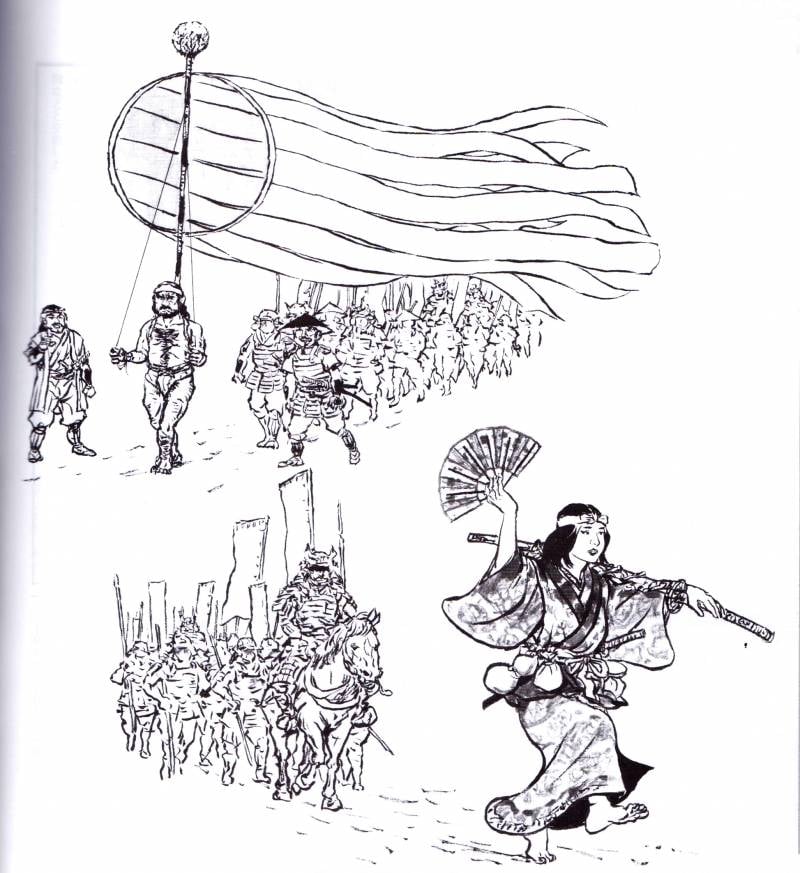
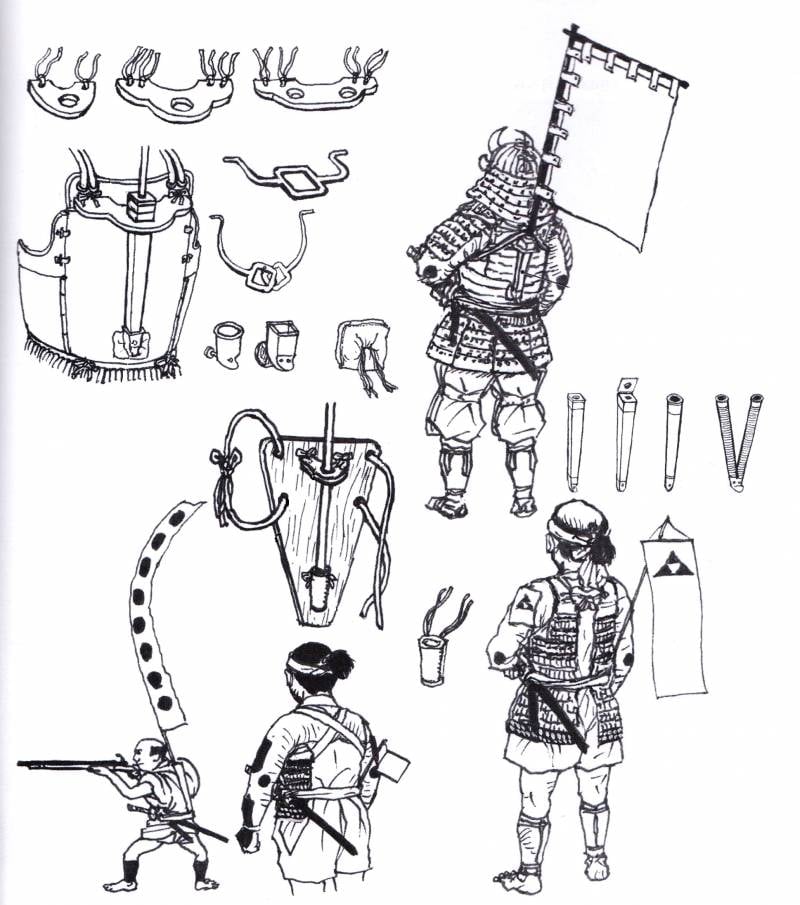

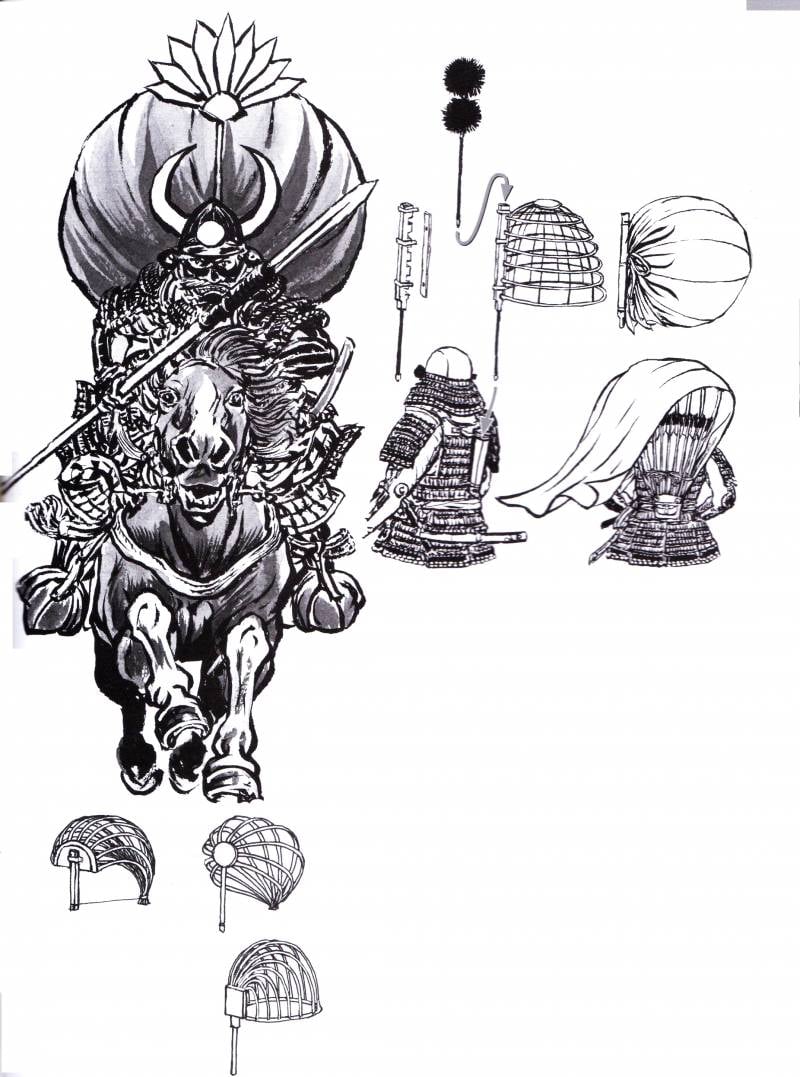
Information